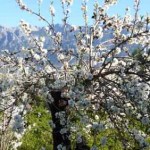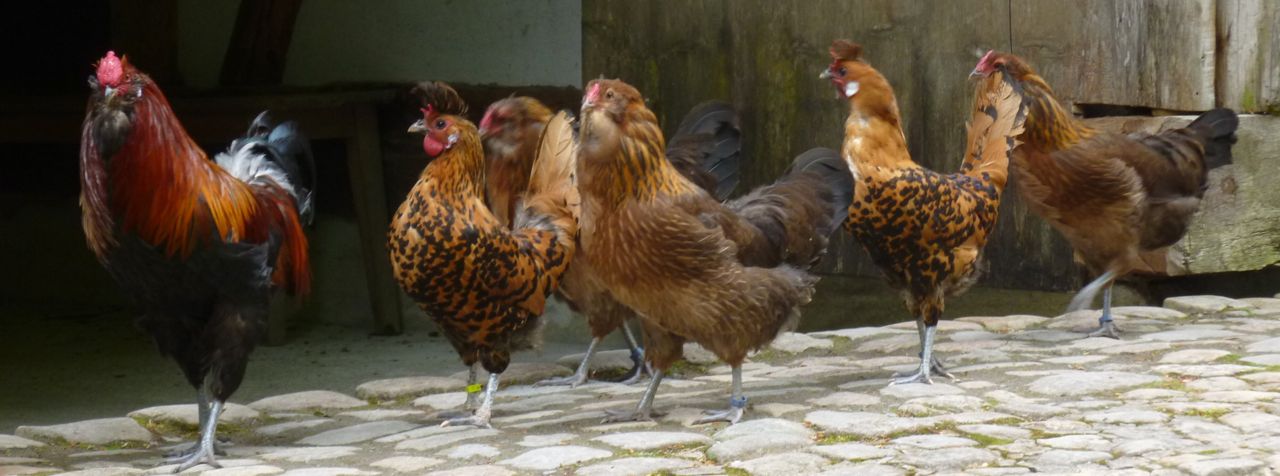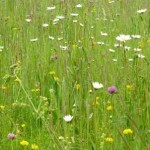Saving species by feeding the world
Until recently, most ecologists were not actively engaged in agricultural questions. However, a highly influential paper, written by David Tilman in 2011 woke ecologists up to the fact that increasing demand for food is one of the biggest current threats to biodiversity. If people don’t have enough to eat, then they will be forced to cultivate more wild land, and agricultural land does not generally support high biodiversity. Hence, paradoxically, increasing yields and enhancing yield stability on existing crop lands is important, not only to feed people, but also to prevent further erosion of natural grasslands and forests.
Organic farming

Almond blossom in Majorca: a diverse agricultural landscape that supports thousands of overwintering birds.
Over the last few years organic farming has won many supporters and steadily gained ground among consumers. Organic farming prohibits the use of certain chemicals and inorganic fertilisers, but it usually results in lower yields – hence higher prices. The benefit of organic farming should be enhanced biodiversity but it may also have benefits that are harder to quantify, such as reduced nitrogen pollution of nearby waterways due to lower runoff. Is organic farming therefore a good thing or not? If we want to feed the world and minimise the land under production, then surely organic farms with their lower yields are not desirable. But, organic farms themselves support greater biodiversity, and some of the species that are more abundant on organic farms – especially in Europe – depend on farmland. The countryside also has very high amenity value in many European nations: people want to see fields filled with flowers and birds, and they’d like to see waterways that aren’t choked with excess algae due to nitrogen pollution.
Assessing the benefits of organic
The question over organic farming is clearly a large one, and our group has been involved in two projects that hope to shed light on this thorny problem. The first is an updated meta-analysis of the effects of organic versus conventional farming on biodiversity. This has involved collecting data from all published studies and providing new landscape level parameters, such as the diversity of surrounding fields. The study confirms that organic farming is a tried-and-tested method of increasing biodiversity on farmland. However, the study also revealed that many organic crops have simply never been studied: for example, organic bananas and chocolate.
Second, we have been involved in the EU Bio-Bio project via Gisela Lüscher, a PhD student based at Reckenholz, Zurich. Gisela has been analysing data collected on multiple taxa from arable fields in four different European regions. This data, collected in a standardised way, allowed her to quantify the benefits of organic farming, and to see the effects of specific management practices, such as tilling, pesticide application etc. Both projects have manuscripts in press.
Links
Tilman D et al (2011) Global food demand and the sustainable intensification of agriculture. PNAS 108: 20260–20264
The Bio-Bio Project homepage
Tuck SL, C Winqvist, F Mota, J Ahnström, LA Turnbull and J Bengtsson. (2014) Land-use intensity and the effects of organic farming on biodiversity: a hierarchical meta-analysis. Journal of Applied Ecology. OPEN ACCESS
Lüscher et al. (2014) Responses of plants, earthworms, spiders and bees to geographic location, agricultural management and surrounding landscape in European arable fields. Agriculture, Ecosystems & Environment 186: 124-134.

